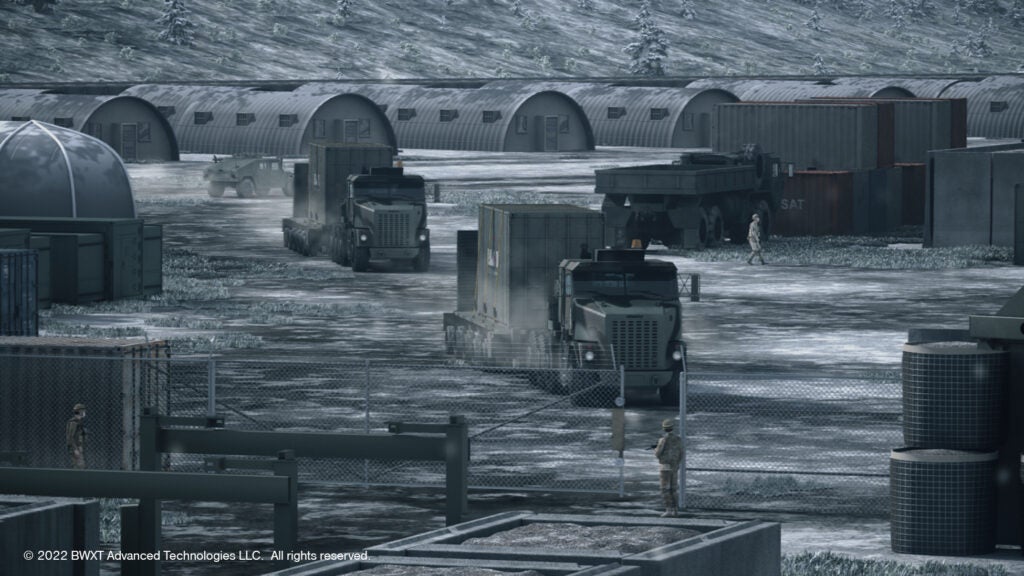The US Department of Defence (DoD) announced 13 September that it had awarded a contract to X-Energy for work on a design for a transportable nuclear micro-reactor as a part of the Strategic Capabilities Office’s (SCO) Project Pele, with an outcome expected to have “significant geopolitical implications for the United States” according to SCO director Jay Dryer.
“The DoD has a long history of driving American innovation, with nuclear power being one of many prominent examples,” said Dryer. “Project Pele is an exciting opportunity to advance energy resilience and reduce carbon emissions while also helping to shape safety and nonproliferation standards for advanced reactors around the world.”
Safe and transportable nuclear reactor
Project Pele, begun in 2022, seeks to construct an 'inherently safe' nuclear micro-reactor within 5 years, with the intention of producing one to five MegaWatts of electricity for a minimum of three years of full-power operation, according to a DoD release from April 2022.
To enable rapid transport and use, designs for the reactor must allow operation within three days of delivery, and it must be able to remove the reactor safely within seven days. Potential applications of the Project Pele reactor include isolated environments, including islands or the arctic.
The reactor will be a single prototype to only be demonstrated within the United States, and under the safety oversight of the Department of Energy, as part of a 'whole-of-government effort' involving the Department of Energy, the National Aeronautics and Space Administration, the National Nuclear Security Administration, the Nuclear Regulatory Commission, and the US Army Corps of Engineers.
In contrast to earlier generations of nuclear reactors that employed or removed carbon to slow or quicken the pace of the nuclear reaction in the reactor as required, the nuclear fuel in the Pele micro-reactor is reduced to small particles that have each been individually coated in layers of carbon to limits the potential energy release.
"...a reactor design that relies primarily on simple passive features and inherent physics to ensure safety.”
2021 DoD Environment Impact Assessment.
This form of safe nuclear reaction is making use of advanced Tristructural isotropic (TRISO) encapsulated nuclear fuels, with each encapsulated particle measuring less than 1mm in diameter, and then coated robustly to resist meltdown or kinetic destruction. The fuel kernel is first shielded with a porous carbon buffer, and then in successive layers this is coated in a sandwich of silicon carbide between two layers of pyrolytic carbon, according to a project overview delivered by Waksman in May 2022.
These pellets act as a first line of containment against the consequences of any harm to the integrity of the reactor. “TRISO fuel is encapsulated and has been demonstrated to be capable of withstanding temperatures up to 1,800 degrees Celsius (3,300 degrees Fahrenheit), allowing for a reactor design that relies primarily on simple passive features and inherent physics to ensure safety”, stated a 2021 environmental impact assessment from the DoD.
“Thanks to the tireless work of the contract teams, the valuable input from local stakeholders, and the talented and experienced NEPA technical support teams at the Department of Energy and U.S. Army Corps of Engineers, we are confident that an inherently safe by design mobile micro-reactor can be constructed and demonstrated safely at Idaho National Laboratory,” said Dr. Jeff Waksman, Project Pele program manager.
“Advanced nuclear power has the potential to be a strategic game-changer for the United States, both for the DoD and for the commercial sector. For it to be adopted, it must first be successfully demonstrated under real world operating conditions.”
A second micro-reactor
The new contract will allow a 'thorough analysis of design options' with the intention informing a preliminary engineering design to address the growing need for an energy source that does not add to fuel demand of 10 million gallons of fuel a day, while supporting the DoD’s requirement for 30 Terawatt-hour per year of electricity. "Due to their extraordinary energy density, nuclear reactors have the potential to serve multiple critical functions for meeting resiliency needs in contested logistical environments,” said Waksman
Before awarding the 1 year contract to X-Energy, the Strategic Capabilities Office had considered three competing teams, and had already extended a contract to BWXT Advanced Technologies in 2022. "By developing two unique designs,” continued Waksman, “we will provide the Services with a broad range of options as they consider potential uses of nuclear power for both Installation and Operational energy applications in the near future." Work with BWXT is underway and long-lead hardware fabrication has begun.
Idaho National Laboratory, where work on Project Pele is being conducted, saw a total growth of $336m - a 13.2% increase - between financial years 2019 and 2020, the year Project Pele began, according to an environmental impact statement from September 2021.
According to the April 2022 DoD release, a decision on whether to transit the technology for the nuclear reactor to operational use will be made at a future date.
"The Strategic Capabilities Office specialises in adapting commercial technology for military purposes," said Dryer. "By nurturing and developing multiple micro-reactor designs, SCO will not just provide options for the military Services, but will also help jumpstart a truly competitive commercial marketplace for micro-reactors."











